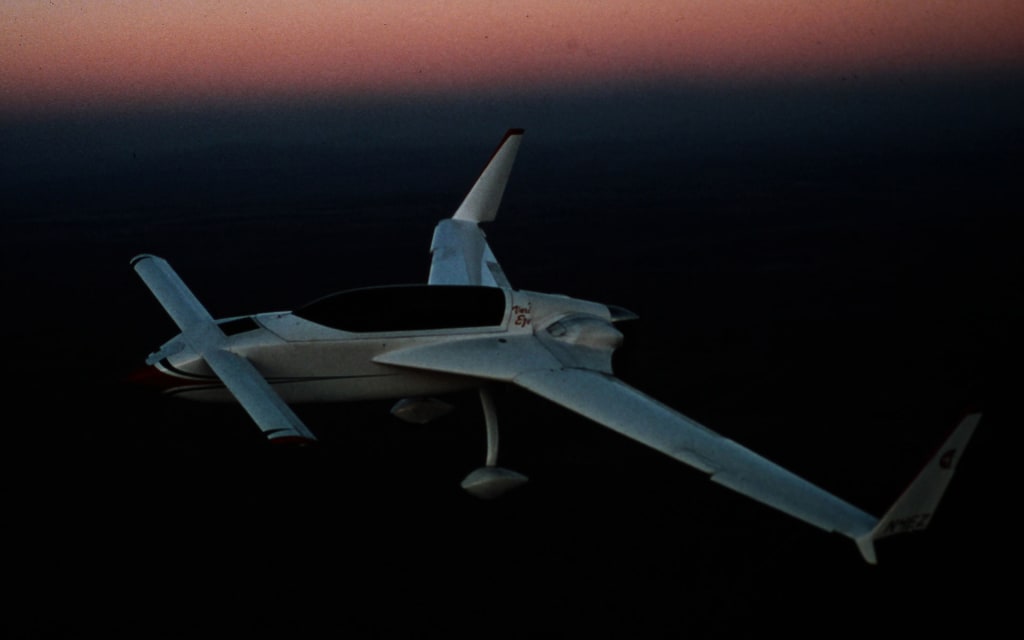
On February 4, 2002, the CIA sent an unmanned Predator drone to the city of Khost in the Paktia province of Afghanistan in order to kill Osama bin Laden. Although the CIA had been patrolling parts of Afghanistan since 2000, this was the first time one had used lethal force, and this lethal force came in the form of a Hellfire missile with the ability to destroy a tank, or a medium-sized building. However, if you know your recent history, then you are aware that Osama bin Laden was not killed in this strike in 2002; instead, a small group of people collecting scrap metal was reportedly obliterated.
In the mid-1800's, Austria used bomb-filled balloons to attack Venice, and this is not only seen as the beginning of the use of drones, it also seems to have set the model for their use as remotely controlled tools of destruction. Although drones are employed in the capacity of surveillance machines, they are always coupled with either direct or indirect objectives of destroying enemy or potential enemy targets.
Today more than 20 nations have developed or are close to developing drone technology. The largest exporter of drone technology is Israel, and it should be no surprise that the nation with the most drones is the United States. Although the US and the UN attempt to monitor and restrict access to drone technology, within the next 10 years nearly all nations will possess drones, as well as most terrorist groups and supranational entities. Despite access to drone technology, the key to possessing a dominant drone program is in the sophistication of the drones. In this area, the United States will maintain dominance so long as our economic structure remains unaltered and our military structure continues to be prioritized above all else.
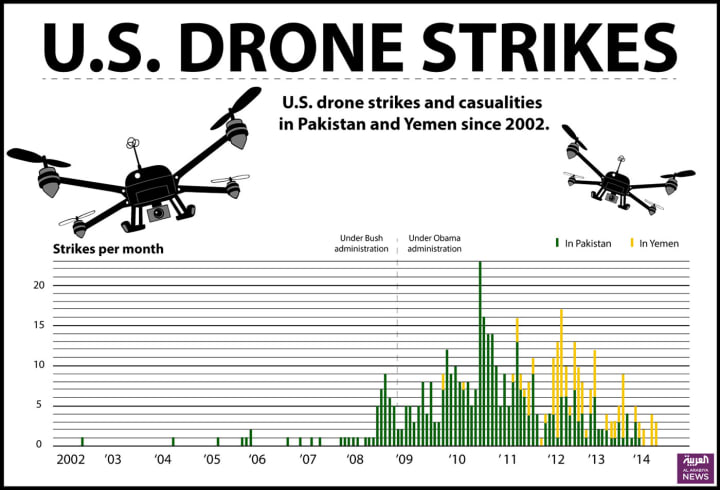
Aerial drones are the most visible, and it is through air power that a nation can maintain peace or exert dominance over another nation. The Predator drone is the most widely known UAV (Unmanned Aerial Vehicle), however, there are dozens of different military drones and numerous civilian drones. One of the current proposals awaiting funding, and the most promising, is a plan to create an aerial bus to carry cruise missiles and drones under the watchful eyes of a manned fighter jet into enemy airspace. The drones would launch and engage sensors to assess threats, and the information they gather would be relayed to the pilot of the fighter jet who would then decide whether or not to engage. The ‘bus’ would then launch a cluster of low-cost cruise missiles that would overwhelm and eventually destroy a target. This sort of a system is designed to keep the costs to the US military relatively low while forcing the enemy to launch their more costly defense systems. In other words, the idea is to use the most modern of technology to engage in one of the most ancient methods of warfare: attrition. This is a highly effective method for the nation that outspends the rest of the world in defense.
AUVs (Autonomous Underwater Vehicles) have been around since the late 1950's, and their use has been almost strictly limited to commercial and research enterprises. Oil and gas companies use AUVs to map out the sea floor before commencing drilling and laying pipe. AUVs have also provided us with some of our most spectacular views of the oceans at depths humans are incapable of surviving. Thoughts of military applications for AUVs seem to be nonexistent, however, what about making use of armed underwater drones to cheaply seek out enemy submersibles? Or using underwater drones to attack ships, pipelines, and other maritime infrastructure of a hostile nation? Keep in mind that although the majority of the US military's attention is focused on terrorism, moderately aggressive nations such as China and Russia are still a concern, and each of those nations possesses capable navies and numerous sea ports.
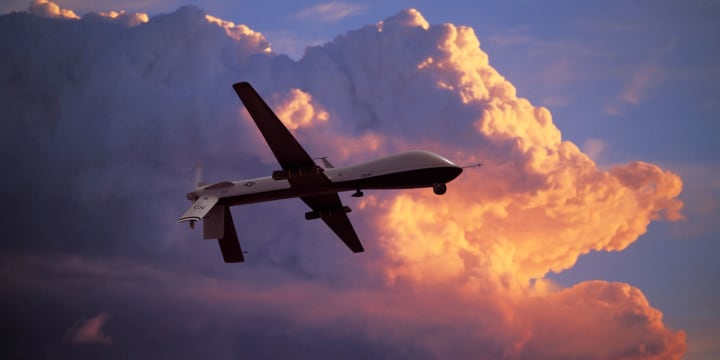
The air and sea drones almost exclusively require a remote human operator, however, this is not true of land drones or Unmanned Ground Vehicles (UGVs). Some UGVs do require human controllers, however fully autonomous robots have been deployed in both civilian and military operations. These robots have been used to disarm bombs, help humans avoid harmful situations, and detect explosives or other harmful materials. Some of these robots have also been programmed to adapt to surroundings, gain new capabilities, or even develop a sense of ethics concerning mission goals. With the ability to program such drones to learn and adapt on their own, the possibilities for the future of drones in warfare and elsewhere are nearly unlimited.
Still, in the military, there is resistance to the use of drones. Although the aerial drones are programmed to care for their own survival, in the end, all decisions are still made by a human controller. The same can be said for sea drones. The Marines see the inclusion of drones on missions as having to make a choice between a man and a machine, and they are reluctant to alter their current dynamic. The Air Force similarly sees their identity as a human flying a machine, and so neither remotely controlled nor autonomous drones are viewed favorably. It is the Army that more openly embraces the idea of machines taking over some of the riskier roles of humans in warfare and defense. And it is in the Army where most of the advances in drone warfare are happening.
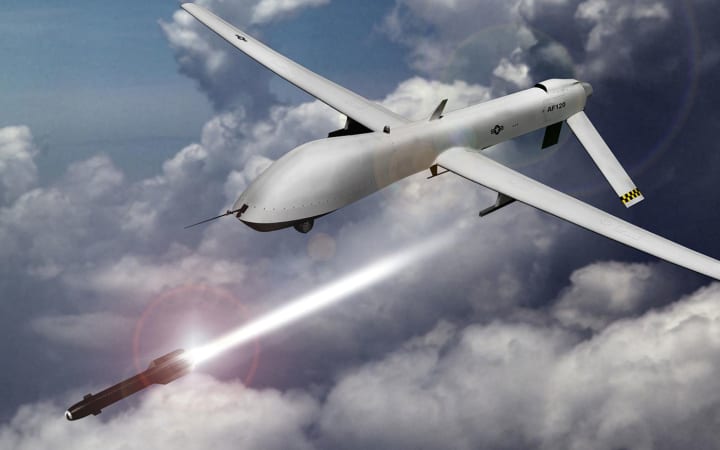
Despite this openness by the Army, and the more careful yet still forward momentum of the other branches of the military, no one in the Department of Defense is considering the inclusion of Artificial Intelligence. While reading this, if you thought it was time to unplug everything and make ready for the rebellion of the machines, you can sit back down and relax, John Connor (or Neo). AI is still theoretical, and it is still only being discussed or attempted by scientists in the private sector. For at least another decade, warfare will still be started and run by humans.
As stated above, nearly two-dozen nations and supranational groups already use drones to one extent or another. Due to lower budgets, limited technological capabilities, and UN and US restrictions, most nations are able to use drones only for surveillance purposes. Nevertheless, eventually enemies of the United States will be able to arm drones to be used as long-range self-destructing bombers or even some in more modern modes of attack. So how can the US secure its safety if their enemies possess nearly the same technology, a technology that is often able to avoid detection?
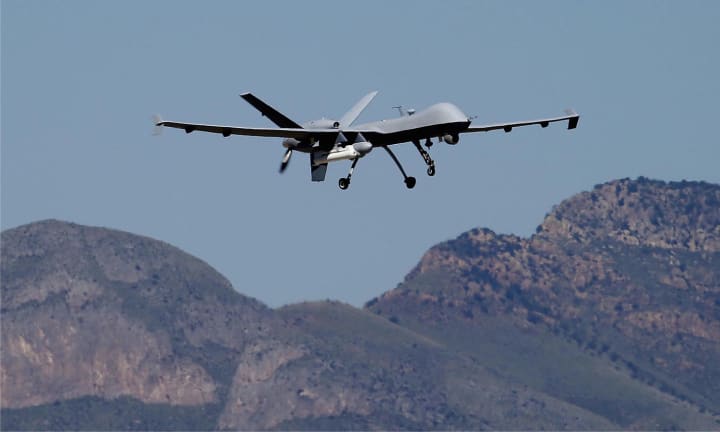
There are 3 ways the US will remain superior to all other nations in drone warfare, and all 3 are tied to finances. First, the US can and does outspend every other country when it comes to defense. For every drone the Chinese make, the US can make 100 (and this is a low estimate). Think of the population difference between the US and China and reverse it (and multiply it) for drone population. Secondly, US drones are generations ahead of any other drones in sophistication. While most countries are attempting to create drones that can fly over other countries and spy, the US drone program is creating machines that can assess the capabilities of different enemy positions and determine which one to attack first. Coupled with this capability is the fact that the US is able to create relatively cheap drones and smart cruise missiles that can be used in swarms to overwhelm the drones and personnel of the enemy. Lastly, the US is already developing and testing a laser defense system that is capable of incapacitating enemy drones with an energy pulse. A single cruise missile costs around $900,000. A single shot from this new laser defense system costs around 50 cents.
In short, the future of drone warfare is the future of warfare itself. Although the idea of A.I. is not even being discussed by the military, other forms of sophistication and power are being integrated even now. Defense contractors have their hands in the pockets of the government, and the government has the citizens running in a fearful circle. This creates the perfect opportunity for the creation of drones in the air, under the sea, and on the land, the likes of which we have only read about in science fiction.
About the Creator
DS Peters
Writer of all types of fiction, poetry, and odd bits of non-fiction. Traveler, scuba diver, teacher, and observer of human behavior in Saudi Arabia. Buy "Rejuvenation", my new dystopian novel, at: https://tinyurl.com/yyevad5n






Comments
There are no comments for this story
Be the first to respond and start the conversation.